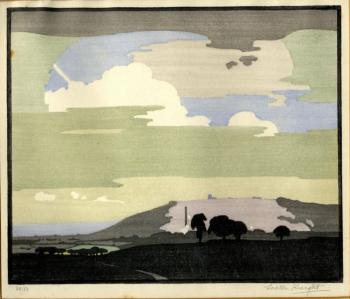Colour Woodcut Society
The woodcut was popularised in Britain during the late nineteenth century by William Morris and artists who associated with him, such as Pre-Raphaelite Edward Burne-Jones and the majority of woodcuts at the time were black and white. During the early years of the 20th Century, a few coloured woodcuts were produced by artists such as Lucien Pissarro and William Nicholson. However by the end of World War I the likes of Morley Fletcher, John Batten, William Giles and Yoshijiro Urushibara established themselves as protagonists in the field. The Colour Woodcut Society founded in 1920 lasted only seven years. The technique for Japanese woodcuts involved cutting separate blocks for each colour and then applying coloured ink by hand employing a brush rather than a roller.
The Society of Graver-Printmakers in Colour which had been in existence for more than a decade was arguably a secessionist society and the great collector, writer and critic Malcolm Salaman commented in his publication listed below that he would have liked to have seen these two bodies join forces. This however never came to pass. Most exhibitions were held at the Macrae Gallery, which was located at 95, Regent St., London and later at Fulham Road, London, SW11.
Get Unlimited Access from just £5


